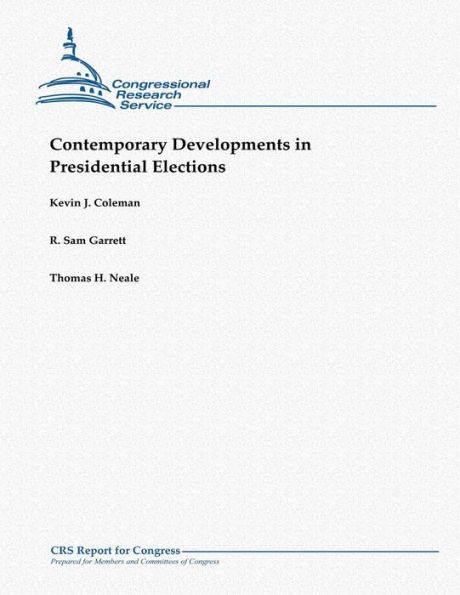This report considers contemporary developments in presidential elections. It emphasizes three topics chosen for their recurring importance and notable recent developments: (1) nominating procedures; (2) campaign finance; and (3) the electoral college. The report highlights significant developments in these areas, particularly for the 2008 and 2012 elections. It also provides background information about the presidential election process in general. Other CRS products cited throughout this report provide additional information about the topics introduced here. As the report notes, 2012 was expected to be a noteworthy election cycle for several reasons. Some are extensions of developments that started in 2008 or before, while others are more recent. Key themes discussed in this report include the following: In recent years, the two major political parties have made efforts to control the "front-loading" phenomenon, the tendency for states to vie to be first or among the first to hold caucuses or primary elections to select presidential nominees. As the result of inter-party cooperation following the 2008 election, front-loading was significantly reduced for 2012; Among Republicans, the winner-take-all method that had been widely used was replaced with a proportional system for contests before April 1, although strict proportional allocation was not mandated. With an open race for the Republican nomination, the pace of primaries and caucuses and the new allocation rule were expected to have an unpredictable effect. In the end, the changes prolonged the contest in comparison to recent previous contests; Significant changes in campaign finance law shaped campaign finance in the 2012 election cycle, largely as a result of the 2010 Supreme Court decision in Citizens United v. Federal Election Commission. In the aftermath of Citizens United, presidential candidates may face additional pressure to raise funds to be able to compete against their opponents and outside groups, particularly new organizations called "super PACs;" One of the most notable campaign finance developments in recent elections is the decline of the public financing system for presidential candidates. The 2012 cycle marked the first since the public financing program's inception that no major candidate accepted public funds; After decades of congressional inactivity, state-level initiatives to reform the electoral college were actively considered in 2012. Among these were proposals to establish the district system of awarding electoral votes in Pennsylvania and Wisconsin and further discussion of the National Popular Vote initiative (NPV). NPV seeks to implement direct popular election of the President and Vice President through an interstate compact, rather than by constitutional Amendment; Various states have considered or are considering changes to their participation in the electoral college. Moreover, a nongovernmental organization, the National Popular Vote (NPV) campaign, has proposed an interstate compact that would achieve direct election without a constitutional amendment.



